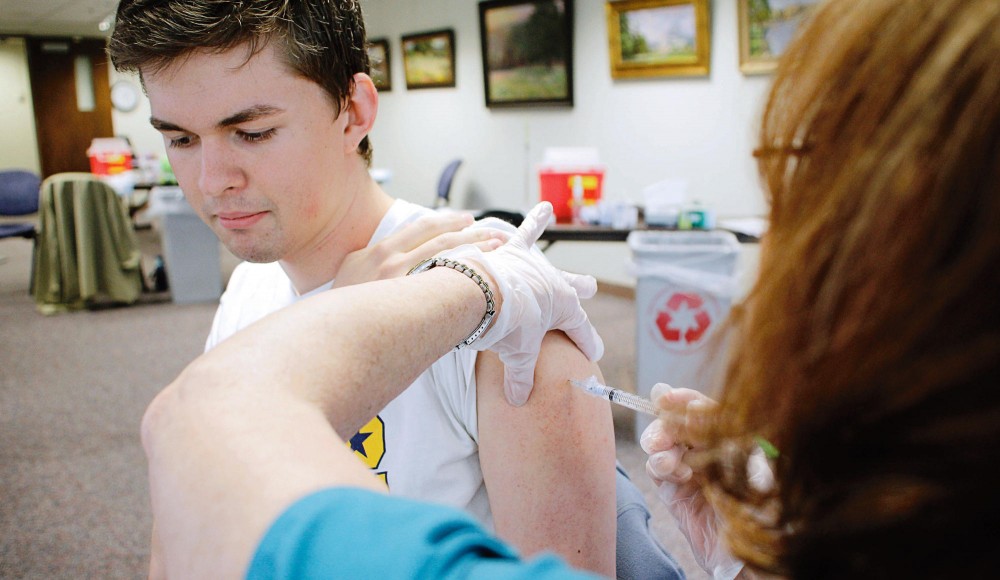Flu vaccines arenâÄôt as effective as previously thought, according to a study by University of Minnesota researchers.
The study, led by Dr. Michael Osterholm, director of the UniversityâÄôs Center for Infectious Disease Research and Policy, concluded that the influenza vaccine only protects about 59 percent of adults under 65.
In the past, Centers for Disease Control officials estimated on their website that the vaccines were effective 70 to 90 percent of the time.
The general public should be surprised with his findings, but researchers have suspected a lower efficacy rate, Osterholm said. Part of his motivation was to get a definitive answer on how well the vaccine worked.
He said flu vaccines would likely rank much lower than vaccines for other ailments like measles, but said flu research for all age groups is incomplete.
Dave Golden, director of public health and communications at Boynton Health Service, said people shouldnâÄôt view the study as reason to avoid getting vaccinated.
âÄúItâÄôs still a great idea to get vaccinated,âÄù Golden said. âÄúThe lowered efficacy increases the importance of doing it for the herd. You donâÄôt want the bug to spread.âÄù
âÄúItâÄôs still the best we have,âÄù Osterholm said. âÄúBut itâÄôs like weâÄôre using an iPhone 1.0 and we need an iPhone 10.0.âÄù
The study should instead create a push for more research into the virus and how to increase the efficacy of the vaccine, Golden said.
Osterholm said the components of the flu vaccine are used to stimulate immune systems and have changed little since their introduction in the 1940s.
The vaccine still protects individuals from more serious flu complications, said Tom Skinner, a spokesman for the CDC.
âÄúWhat is clear about this study is that we simply need better and more effective flu vaccines,âÄù Skinner said.
The study also found that a nasal spray vaccine was 83 percent effective in children 6 months to 7 years old. There was little information on its effectiveness for older groups.
The efficacy of the H1N1 vaccine was 69 percent, Osterholm found.
He and his team read more than 5,700 research articles on influenza vaccinations from the past 40 years, and chose 31 of the most relevant. The others were either flawed or didnâÄôt provide an in-depth analysis of the influenza vaccineâÄôs effectiveness, the study said.
âÄúIt was a macro look at different studies,âÄù Skinner said.
Osterholm and his colleagues believe the research will âÄúprovide the most accurate estimates of the efficacy and effectiveness of influenza vaccines that are licensed at present in the USA,âÄù the report said.
Right now, other scientists are working in several directions to provide more effective options for people looking to get immunized, said David Spiro of the National Institute of Allergy and Infectious Diseases.
Researchers are coming up with new ways to manufacture the vaccine, including âÄúuniversal vaccinesâÄù that could treat multiple strains of the virus and therefore, be more broadly protective, Spiro said. They would also prevent the flu virus from mutating over time.
Researchers have also been experimenting with using adjuvants as part of the vaccine, which enhance the bodyâÄôs immune response. Spiro said the adjuvants have had good results in experimentation.
Changes to the general population like an increase in obesity could be affecting how the vaccine works in the body, though much more research is needed, Osterholm said.
âÄúAt this point, we have a lot of work to do.âÄù











